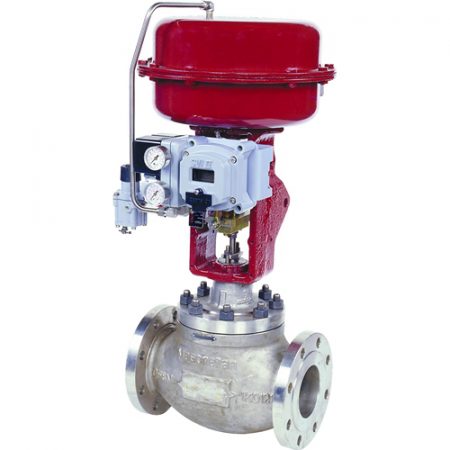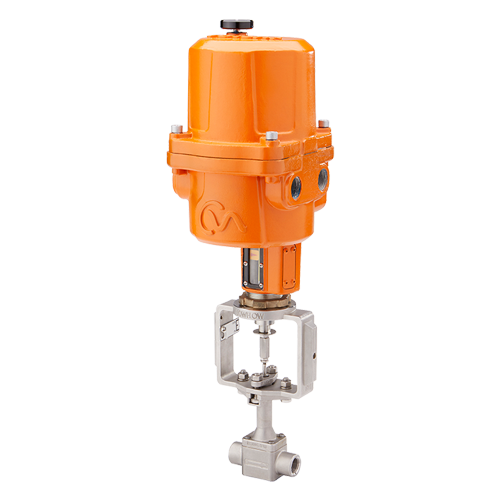Critical Variables to Take Into Consideration When Choosing Control Valves
Critical Variables to Take Into Consideration When Choosing Control Valves
Blog Article

Maximize Power Cost Savings and Convenience With Advanced Structure Automation Controls
In the realm of modern-day style and center management, the assimilation of sophisticated building automation controls stands as a crucial development. The convergence of innovation and sustainability has actually birthed a brand-new period where power performance, convenience optimization, and operational streamlining are no more attainable realities but far-off desires. By utilizing the power of automation, buildings can adjust, react, and advance in manner ins which were once unthinkable. The potential for considerable power financial savings and improved convenience is not simply an opportunity however an assurance waiting to be met. This standard shift in building administration holds the essential to unlocking a world where ecological conscientiousness and owner well-being sympathetically exist together within the walls of our frameworks.
Power Effectiveness Perks
Power efficiency advantages can dramatically decrease energy consumption and functional expenses in buildings. Energy-efficient systems, such as advanced structure automation controls, can maximize the use of resources like illumination, home heating, and cooling, leading to reduced power costs over time.
In addition, enhanced energy effectiveness can lengthen the life expectancy of structure equipment and systems. By running more successfully, cooling and heating systems, lighting components, and various other structure elements experience less deterioration, resulting in decreased maintenance and replacement costs. Additionally, energy-efficient buildings frequently command greater building worths and rental prices, supplying lasting economic advantages to proprietors.
Additionally, energy effectiveness can improve resident comfort and productivity. Appropriately regulated interior settings with optimal lights and thermal conditions produce a more conducive and enjoyable work area, leading to enhanced worker complete satisfaction and performance. In general, the power effectiveness benefits associated with advanced structure automation controls are complex, encompassing expense financial savings, environmental stewardship, and passenger health.
Boosted Convenience Control
Enhancing convenience control in structure settings requires an advanced integration of advanced automation systems for optimum passenger wellness. By making use of innovative structure automation controls, centers can tailor the indoor atmosphere to fulfill the particular requirements and choices of owners. control valves.
By integrating these sophisticated controls, buildings can not just improve convenience yet likewise enhance energy efficiency by enhancing system operations based on real tenancy and usage patterns. Eventually, focusing on resident comfort with advanced automation systems leads to an extra enjoyable and healthier interior setting.
Functional Performance Improvements

Additionally, the implementation of real-time surveillance and analytics devices enables structure drivers to identify energy inadequacies and functional abnormalities immediately. By constantly keeping track of power usage patterns and system efficiency metrics, changes can be made in real-time to optimize energy usage and make certain peak operational effectiveness. control valves. Additionally, incorporating demand action methods right into structure automation controls can even more enhance operational efficiency by dynamically adjusting energy usage based on grid conditions and pricing signals
Indoor Environment Optimization
Efficient interior environment optimization is a basic aspect of structure automation controls, ensuring owners' convenience and wellness while making the most of power cost savings. By using advanced sensors and controls, constructing automation systems can continually keep track of and change temperature, humidity degrees, air high quality, and ventilation to create an ideal indoor setting. Keeping comfy and regular problems not just improves passenger fulfillment however also enhances efficiency and general health.
Indoor climate optimization additionally plays a critical role in energy performance. By fine-tuning cooling, home heating, and air flow systems based on real-time information and occupancy patterns, building automation controls can significantly lower power consumption - control valves. For example, executing techniques such as demand-controlled ventilation and thermal zoning can assist reduce energy waste while ensuring that each location of the building receives the required conditioning.

Lasting Environment Development
Building automation manages not just optimize indoor climate conditions for energy performance and passenger comfort however also lay the foundation for creating a sustainable setting with tactical management of resources and systems. By integrating advanced building automation technologies, such as sensing units, actuators, and smart software application, facilities can change and check power usage in real-time to lessen waste and minimize their carbon footprint. These systems enable anticipating maintenance, identifying possible problems prior to they intensify and enhancing tools performance to enhance durability and efficiency.
Moreover, lasting environment production prolongs beyond energy administration to encompass water preservation, waste decrease, and indoor air quality improvement. Building useful site automation controls can regulate water use, discover leakages, and ensure correct garbage disposal practices, adding to total sustainability efforts. In addition, by keeping an eye on and regulating air flow and purification systems, these modern technologies boost passenger health and wellness and performance while reducing power intake related to HVAC operations.
Final Thought
Finally, progressed structure automation controls offer significant benefits in regards to power financial savings, convenience control, functional efficiency, indoor environment optimization, and producing a sustainable environment. By carrying out these controls, structures can achieve ideal performance while minimizing energy consumption and improving passenger convenience. It appears that making use of sophisticated automation technology is essential in boosting building efficiency and developing a much more lasting future.
Power performance advantages can substantially lower energy intake and operational expenses in structures. Overall, the power performance benefits linked with sophisticated structure automation controls are multifaceted, encompassing expense savings, ecological stewardship, and passenger wellness.
Additionally, incorporating need response strategies into building automation controls can additionally boost functional effectiveness by dynamically readjusting power usage click for more info based on grid conditions and rates signals.
Building automation controls not just enhance interior environment problems for power efficiency and resident convenience however additionally lay the structure for creating a sustainable environment through strategic monitoring of resources and systems.In verdict, advanced structure automation controls offer substantial advantages in terms of energy savings, convenience control, operational efficiency, interior environment optimization, and producing a lasting setting.
Report this page